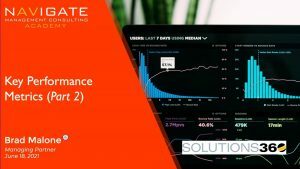A single precise number does not make a valid estimate
 In Part 1 of this blog series, we looked at the myth of the perfect estimate and discussed how assumptions and risks factor into an estimate.
In Part 1 of this blog series, we looked at the myth of the perfect estimate and discussed how assumptions and risks factor into an estimate.
In Part 2, we examined the three basic methodologies used in the estimation process.
Now let’s talk the about presenting the estimate.
A valid estimate should be presented as a range, or as a point with confidence factors.
Looking at our estimating a typical commute to work example from Part 1, the estimate could be presented as:
- between 5 and 9 minutes with a 95% probability,
- 7 minutes with a variance of +/- 40 percent (at 95% probability), or
- 7 minutes with a variance of –40% to +112% (at 100% probability).
A single, precise number does not make a valid estimate.
Given the three components of an estimate, what do we do once a project starts?
Let’s look again at the commute example. We made three key assumptions for conditions that existed prior to the drive (time of departure, day of week, and weather), and three based on conditions during the drive (no school buses at two stops and smooth sailing through the intersection) in order to arrive at an estimate of 6 to 7 minutes.
We would expect the commuter to update the conditions as she knew them, which would impact the forecasted estimate. Maybe she doesn’t get out of her house until after 7:30 a.m., at which point she knows 6 minutes is no longer possible. Then maybe she encounters a school bus at the second stop, which puts her drive estimate at closer to 8 minutes. She makes it through the intersection as planned, there are no accidents, and arrives in 7 minutes 40 seconds.
Measuring the actual occurrence must be precise, in order to learn from it, but initial estimates must be in a range.
I often see the opposite: The estimate is precise but tracking actuals is vague…Or the loop between the actuals and the people estimating is never closed.
I also often find that even though assumptions are written into a scope of work, they are rarely tracked or used to make changes to the estimate or forecast the result. In the commuting example, three conditions could be verified at the beginning of the commute and three others could be turned into discreet milestones — places in the project where we have important knowledge with which to update our estimate.
We must always reward our people for telling the truth when it comes to actuals and variances, otherwise we’ll never know whether our current estimates are valid. We’ll also never learn how to estimate better, and we’ll be blinded (or blind-sided) by over-confidence.
Valid estimation does not have to be onerous, but it does have to be thoughtful and follow some prescribed guidelines.
- What are the key factors, conditions, assumptions and potential risks that impact the estimate?
- What methodology will be used and can you substantiate its use?
- When presenting the estimate, how can you show in a meaningful way that there will be the potential for variance?
- If it’s a fixed-price bid, how much risk are you willing to take on, and where in your estimate range will you establish your price?
- And finally, how do you track actual occurrences in order to continually revise our assumptions and validate our estimating information?
Precise estimates will never be correct, but the more you know, the closer you can get to a valid, realistic, and therefore perfect estimate.
By Brad Malone, Managing Partner at Navigate Management Consulting
 Solutions360 is a proud sponsor of Navigate Academy Module 20:
Solutions360 is a proud sponsor of Navigate Academy Module 20:
Key Performance Metrics Part 2
Key Performance Metrics drive employee behavior – across all levels and functions of the company. Well formulated metrics align the intended behavior with the company’s strategy and goals. This session will focus on the underlying structure of assigning, capturing and analyzing metrics; show particular metrics for common company roles (Sales, Project Manager, Technician), and provide an understanding about how some metrics can foster unintended consequences.
Join the live webinar
Friday, June 18th @ 11:00 am CDT
Learn more about Navigate Academy HERE
Handpicked Related Content:
Handpicked Related Content:


